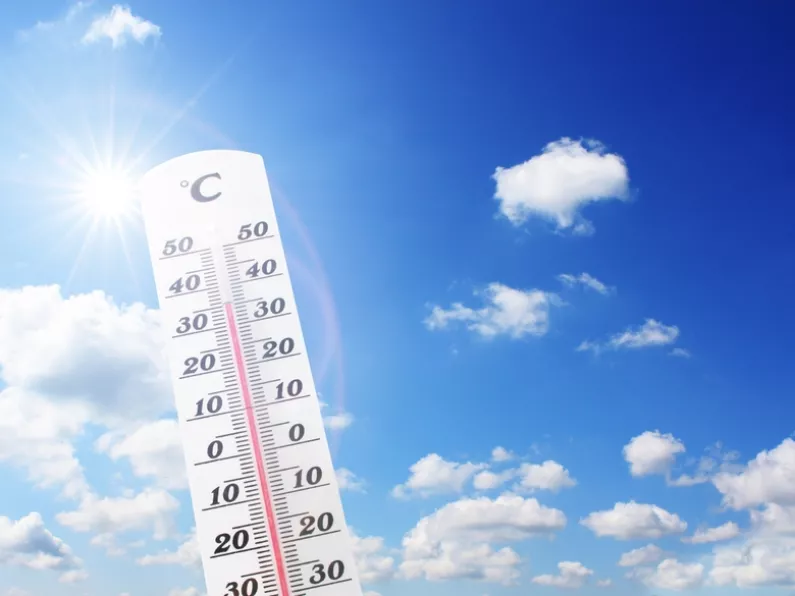In this article, we'll discuss heat stroke and how to recognize it and protect you and your baby from complications.
The heat is on, literally! We have just had the hottest day of the year and, based on recorded data, the hottest day ever on Earth!
Staying cool and keeping well hydrated now becomes literally a matter of life and death for expecting mothers.
The key to preventing any complications to mother and her baby will be first recognizing the signs and symptoms of heat stroke, and seeking treatment as soon as possible.
Heat stroke: how to recognize it and protect you and your baby from complications
Heat stroke is the most serious heat-related illness. It occurs when the body can no longer control its temperature; the body’s temperature rises rapidly, the sweating mechanism fails, and the body is unable to cool down.
When heat stroke occurs, the body temperature can rise to 106°F or higher within 10 to 15 minutes.
Heat stroke can cause permanent disability or death if the person does not receive emergency treatment.
Pregnancy itself is not only a risk factor for developing heat stroke, but pregnant women are at an increased risk of a severe complication of heat stroke.
Why is this?
- Due to the normal physiological changes associated with pregnancy, a woman may not realise she is becoming severely dehydrated until it is too late.
- The symptoms associated with heat stroke can be “masked” by pregnancy.
- If a pregnant woman is suffering from heat stroke, her body will have to work harder to cool her and her baby down. This in turn puts increased load on her heart.
- The body cools itself primarily by increasing blood flow to the skin and increasing sweat production. This reduces the blood flow to the uterus and placental. This reduction in blood flow to the utero-placental unit can cause premature uterine contractions and, if left untreated, increases the risk of pre-term birth.
Signs of heat stroke
Patients may present with an elevated body temperature, an increased pulse and decreased blood pressure.
They may also be breathing fast.
As the symptoms progress, the pregnant woman may complain of feeling excessive weakness, lethargy, nausea, or become confused.
Treatment
If you believe that you are suffering from heat stroke, seek help immediately from the nearest emergency room or urgent care center and contact your Obstetrician.
The first aspect of treatment will include confirming the diagnosis.
Your health care provider will ask you about exposure to excessive heat and this may include questions about your home and occupational environment, and a full mother and fetal assessment.
The maternal assessment will involve a body temperature measurement, core body temperature ideally, and this can be done with a rectal thermometer.
The patient’s pulse may be elevated and their blood pressure decreased. However with a pregnant patient, these changes may not be noticeable until the associated dehydration is severe.
The patient may also be breathing quickly and will have an increased respiratory rate when measured.
In severe cases, pregnant mothers may present with features of heart failure such as fluid in their lungs (Pulmonary Edema) and irregular heart rhythms (Arrhythmia's).
Investigations
- Complete Blood Count: Patients who are bleeding may have a low haemoglobin.
- Coagulation Profile: Patients with clotting abnormalities may have abnormal clotting indices
- Kidney Function: As the heat stroke worsens and the dehydration becomes severe, some women may develop acute kidney injury.
- Liver Function: In severe cases, patients may have impairment of liver function.
- ECG: This will detect an abnormal hearth rhythm, which is a risk factor for heat stroke
- Chest X-ray: Not commonly requested for pregnant women. But, if there is a suspicion of fluid in the lungs, then this may be requested with precautionary abdominal shielding.
- Cardio-tocographic monitoring: This will be done to measure the baby’s heart rate to detect any abnormalities and detect if premature contractions are occurring and measure the strength and frequency of them.
Prevention is better than cure
Pregnant women who are at increased risk to heat exposure due to their occupation or home should try and stay as cool as possible.
If there is access to AC, ideal! Fans with misters or ice packs and sponge baths can also be used.
Pay close attention to your hydration and how much urine you are passing.
If you notice you are not going to the bathroom as often, increase your fluid intake with keen attention to fluids that contain electrolytes.
If these measures are unsuccessful and you notice you are not feeling well or display any of the symptoms noted above, then seek care urgently.
Within the hospital/urgent care setting, patients maybe placed in “cooling units” which are essentially beds with continuous fans and misters to facilitate evaporative and convective cooling.
Your core body temperature will be monitored continuously and cooled intra-venous fluids can also be given in the immediate resuscitative phase.
Treatment is directed primarily at supportive care and patients who develop complications such as acute kidney injury, heart failure, respiratory failure, and clotting abnormalities will have treatment directed at these conditions.
Fetal complications
Apart from the risks to herself, pregnant women have the additional risks of fetal complications.
As the body is cooling itself, blood flow is reduced to the utero-placental unit and directed to the skin.
In severe cases, this can lead to reduced oxygen delivery to the baby which can impair neurologic function later in life and cause pre-term contractions which can progress to pre-term birth.
Treatment of pre-term contractions is primarily directed at treating the heat stroke. Additionally, drugs that reduce contractions (Tocolytics) can also be used to prevent the progress to pre-term birth.
During these very hot days, please pay careful attention to any changes in your body or fetal movements and if you are feeling overwhelmed with this heat, seek help!







